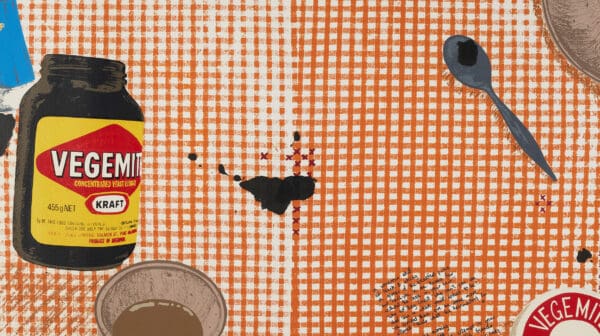
Reframing a Collection
Drawn from the Cruthers Collection of Women’s Art at the University of Western Australia (UWA), Lawrence Wilson Art Gallery’s show Place Makers, reframes the artists—who just happen to be female.
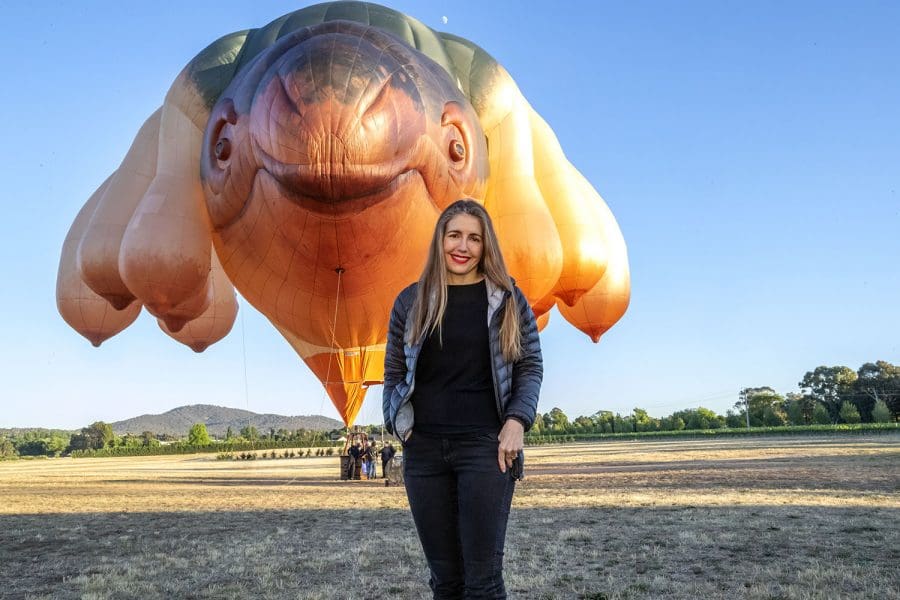
Patricia Piccinini with Skywhale 2013, nylon, polyester, nomex, hyperlast, cable, National Gallery of Australia, Canberra, Gift of anonymous donor 2019, Australian Government’s Cultural Gifts Program.
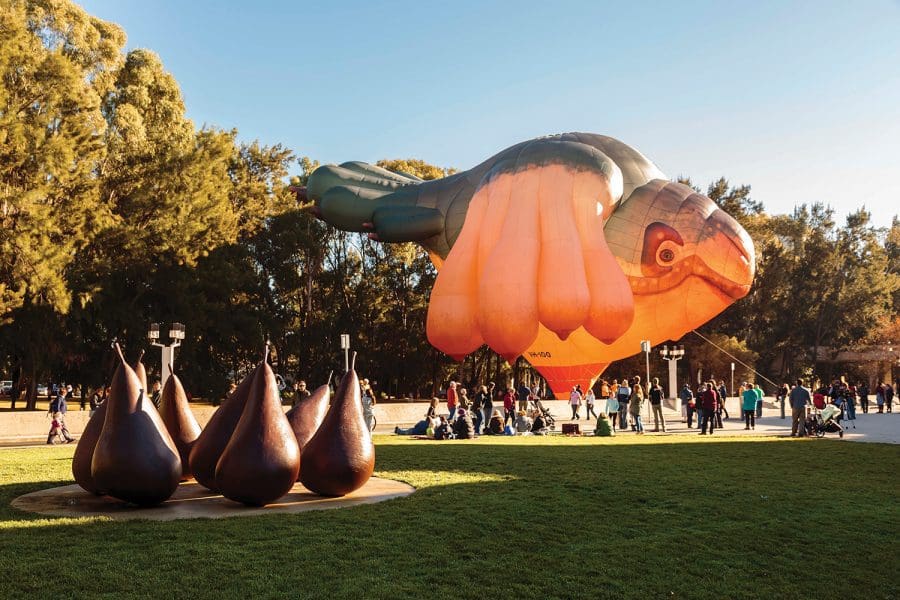
Patricia Piccinini, Skywhale 2013, nylon, polyester, nomex, hyperlast, cable. National Gallery of Australia, Canberra. Gift of anonymous donor 2019, Australian Government’s Cultural Gifts Program.

Patricia Piccinini standing Inside Skywhale 2013, nylon, polyester, nomex, hyperlast, cable, National Gallery of Australia, Canberra. Gift of anonymous donor 2019, Australian Government’s Cultural Gifts Program.
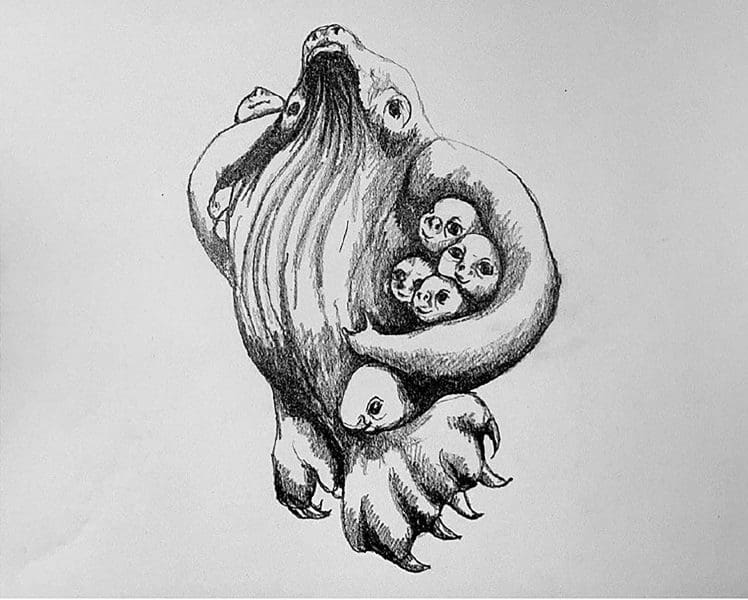
Patricia Piccinini, Skywhalepapa 2019-2020 (artist’s sketch). Courtesy of the artist.
When Patricia Piccinini’s hot air balloon sculpture Skywhale, 2013, took to the Canberra skies, the public reaction was swift. Ranging from wondrous delight to sheer outrage, people talked about everything from the Skywhale production costs to its remarkably well-endowed undercarriage. Originally created for the Centenary of Canberra and last seen at TarraWarra Museum of Art in late 2019, the powerfully maternal Skywhale is soon to be joined by Skywhalepapa, 2020, a gargantuan male counterpart gently embracing a litter of bulbous offspring.
Commissioned as the third instalment of The Balnaves Contemporary Series and part of the National Gallery of Australia’s female-driven Know My Name initiative, Skywhalepapa is designed to reflect how our views of nurturing are changing.
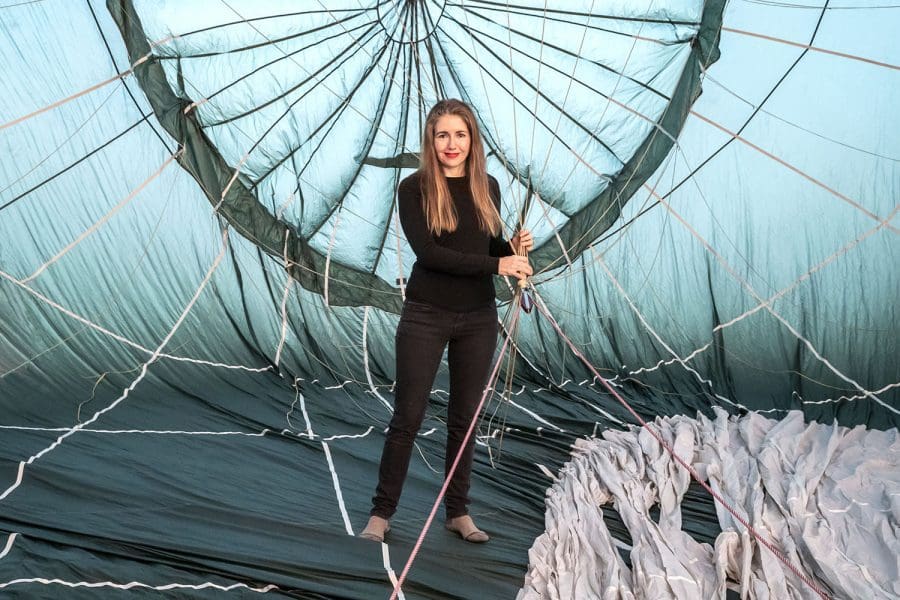
While the Skywhales might be interpreted as a family, at the launch of the NGA’s 2020 program Piccinini admitted to not being entirely certain of the relationship between the creatures. “I’m not trying to say this is what a real family looks like, but I am trying to show this is what caring looks like,” she said. “This is something we can celebrate, it’s something good that’s happened in our lifetimes, the shift in how we understand care, masculinity and parenthood.”
For close to three decades, Piccinini has maintained a long-term fascination with how evolution, technology and humanity intersect, with the Skywhale becoming one of her most controversial creations. “Skywhalepapa is the next step in the Skywhale project, one that I’d never thought I’d be able to do,” says Piccinini. “With Skywhale, I had a character. With the Skywhale and Skywhalepapa, I have a relationship, a narrative. I have a story.” Describing their appearances as “more a performance than a sculpture,” the Skywhales are scheduled for eight flights over Canberra before they tour to other locations around Australia.
Skywhales: Every heart sings
Patricia Piccinini
National Gallery of Australia
7 March 2020 – 1 August 2021
Flights 7 February, 8 March, 3 April 2021. Bookings essential
This article was originally published in the March/April 2020 print edition of Art Guide Australia.